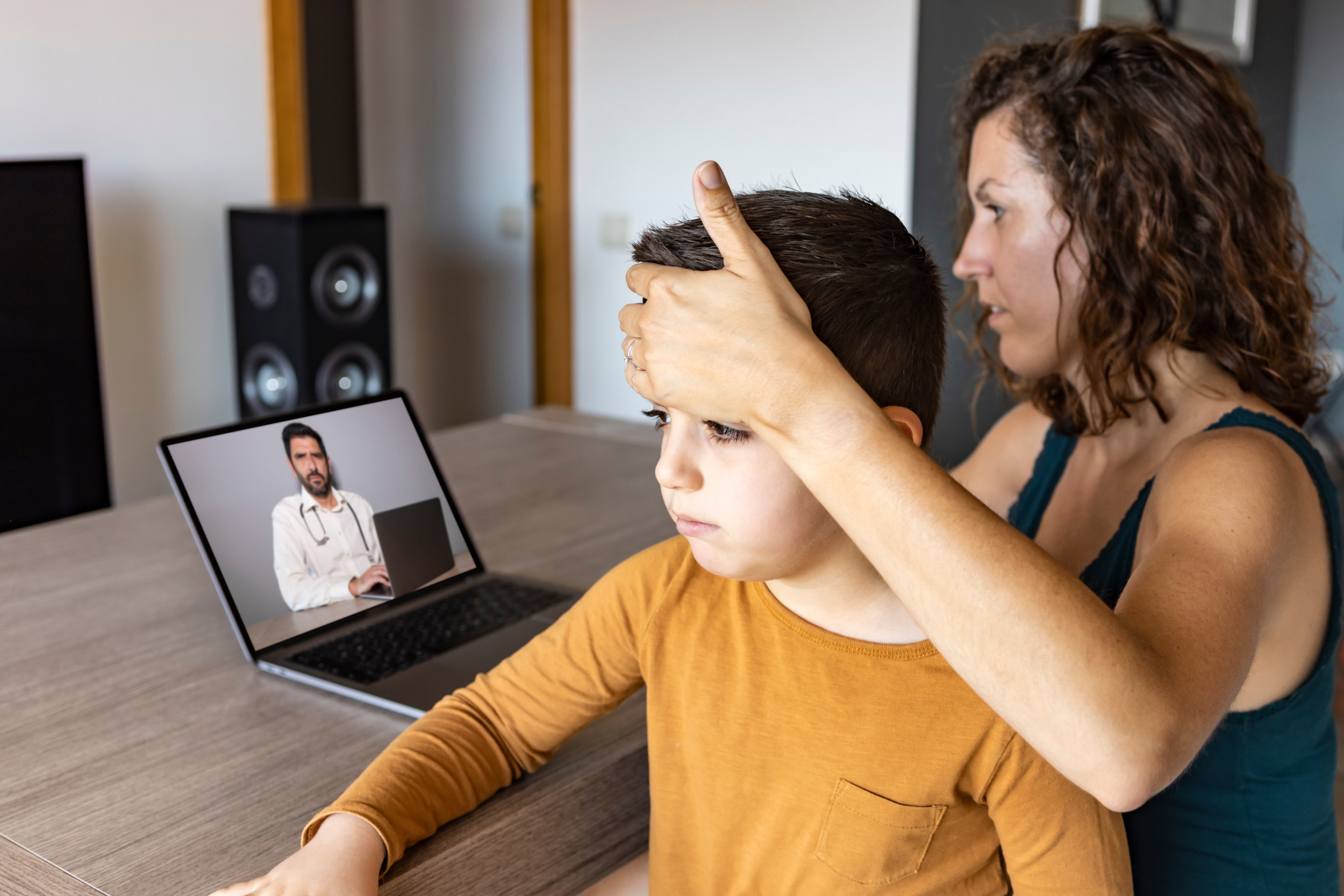Students at Bessemer Elementary School don’t have to go far to see a doctor. If they’re feeling sick, they can walk in to the school’s health clinic, log on to a computer, and connect with a pediatrician or a family medicine provider. After the doctor prescribes treatment, students can in many cases go straight back to class – instead of having to go home.
300 students received care at Bessemer’s telemedicine clinic last year. 240 returned to class the same day.
The telemedicine program was launched in fall 2021 by Guilford County Public Schools, North Carolina’s third largest school district, as a way to combat chronic absenteeism. The number of students missing 10 or more days of school soared in the district – and nationally – during the pandemic, and remains high in many places.
Piloted at Bessemer, the program has gradually expanded to 15 of the district’s Title I schools, high-poverty schools where families may lack access to health care. Along with other efforts aimed at stemming chronic absenteeism, the telemedicine program is helping, said Superintendent Whitney Oakley. The chronic absenteeism rate at Bessemer fell from 49 percent in 2021-2022 to 37 percent last school year, an improvement though still higher than the district would like.
“It really doesn’t matter how great a teacher is or how strong instruction is, if kids aren’t in school, we can’t do our job,” she said.
Telemedicine reduces absenteeism study shows
Oakley said district administrators focused on health care access because they were seeing parents pull all their children out of school if one was sick and had to visit the doctor. Rates of chronic absenteeism were also higher in areas where families historically lacked access to routine medical care and had to turn to the emergency room for non-emergency health care needs.
The telemedicine clinic is also a way to relieve the burden on working parents, Oakley said: Many parents in the district’s Title I schools work hourly wage jobs and rely on public transportation, making it difficult to pick up a sick child at school quickly.
Hedy Chang, executive director of Attendance Works, a nonprofit that combats chronic absenteeism, said that early research indicates that telehealth can improve attendance. According to one study of three rural districts in North Carolina that was released in January, school-based telemedicine clinics reduced the likelihood that a student was absent by 29 percent, and the number of days absent by 10 percent.

monkeybusiness/Depositphotos
School districts are having some success with using telemedicine and teletherapy to ensure more kids stay in school.
Some districts are also turning to virtual teletherapy services to fight chronic absenteeism. Stephanie Taylor, a former school psychologist who is now vice president of clinical innovation at teletherapy provider Presence, says the company’s work has expanded from 1,600 schools to more than 4,000 in recent years as the need for mental health services grows. Therapy can help kids cope with emotional issues that might keep them from attending school, she said, and virtual services give students more choice of counselors and a greater chance of finding someone with whom they mesh.
Plans to expand to 50 schools
At Guilford County Public Schools, the district plans to expand its existing mental health services to eventually include teletherapy, according to Bessemer Elementary Principal Johnathan Brooks. The district is also planning to roll out its telemedicine clinics to all of 50 of its Title I schools, said Oakley.
The clinic is staffed by a school nurse who helps the physician remotely examine the student and ensures that prescriptions are quickly filled. The program is funded through a partnership between the district, local government and healthcare providers and nonprofits, which allows for uninsured families to still access treatment and medicine, Brooks said.
[Related: Schools won’t recover from COVID absenteeism crisis until at least 2030]
The biggest challenge in launching the clinic was getting parents’ buy-in, he said. The district held meetings with parents, particularly with those who don’t speak English as a first language, to communicate how it would help their kids. To access the program, parents must opt in at the beginning of the school year.
Of the 300 students who received care at Bessemer’s clinic last year, 240 returned to class the same day, said Oakley. Without the program, she said, “all 300 would have just been sent home sick.”
She added: “School is often a trusted place within the community and so it helps to bridge some of those gaps with medical providers. It puts the resources where they, [the kids], already are.”
***
Javeria Salman is a staff writer for The Hechinger Report covering K-12 education issues through the lens of innovation and technology. Her work has appeared in Telemundo, The Atlanta-Journal Constitution, The Christian Science Monitor and the Solutions Journalism Network.
This story about telemedicine in schools was produced by The Hechinger Report, a national, nonprofit, independent news organization focused on inequality and innovation in education. Sign up for the Hechinger newsletter.




























